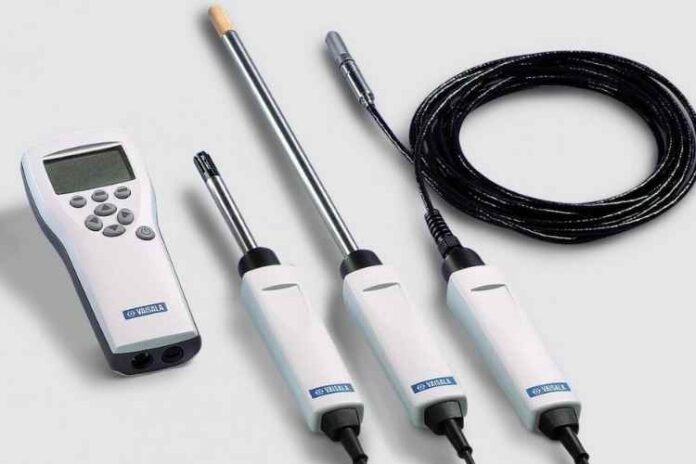Evaporation and condensation of air is a constant cycle. Water vapour is formed when water evaporates. Water vapour is present in the air around us. The presence of water vapour in the atmosphere is called humidity. The weather becomes warm when the humidity is high and cooler when the humidity is low. The healthy indoor humidity level is between 30 – 60%. A hygrometer or humidity sensor is used to measure the humidity of a place. Too much humidity inside buildings can cause dampness and mould, and less humidity causes dryness; the amount of moisture in the air influences the level of comfort experienced by people. The humidity inside homes is controlled with an air conditioner in the summer and a humidifier in the winter.
The terms used to describe humidity are absolute humidity, relative humidity, and dew point. Absolute humidity is the amount of water vapour in the air regardless of temperature. Relative humidity represents the amount of moisture present in the air to the amount needed for saturation at a particular temperature. The dew point denotes the temperature below which the air must be cooled to be saturated with water vapour. Measuring the humidity and maintaining it is required in cold storage, homes, hospitals, recreational buildings, and industries.
Types of humidity sensors
Capacitive: A humidity-dependent condenser is used in these sensors to measure the moisture level. It is commonly used in industrial and commercial places.
Resistive: Sensors measure the electrical change in devices such as conductive polymers and treated substrates. They are also known as electrical conductivity humidity sensors. These sensors are used in residential and commercial environments.
Thermal conductivity: These sensors are suitable for environments with high temperatures. They calibrate the difference between the thermal conductivity of dry air and that of moist air.
Humidity plays a significant part while operating industrial equipment, electrostatic sensitive devices, and high voltage devices. Sensitive equipment is operated in an environment where the humidity is suitable for the equipment.
The places where humidity is sensed and controlled are
Industries: Humidity sensors are used in refineries and other metal and chemical industries where the furnaces cause a high temperature in the air. Humidity is controlled to reduce the firing rate, and food processing, textile, and paper plants also control humidity.
Hospitals: Some types of equipment like ventilators, sterilisers, and incubators need humidity control. Hygrometers are also used in pharmaceutical plants and biological processes.
Electronics and semiconductor plants: Most electronic devices function the best only within a range of humidity values. Semiconductor fabrication plants must maintain precise humidity values, and even a tiny change makes a huge impact.
Homes and offices: Controlling humidity in homes and offices is essential as high moisture levels can affect people’s health. High humidity causes dehydration, muscle cramps, and fatigue, and health issues associated with low humidity are dry skin, itchy eyes, and irritation of nasal passages and throat.
Agriculture: Humidity sensing is required in agriculture because moisture content plays a vital role in the growth of plants. Humidity control is needed for greenhouses and indoor vegetation.
A humidity sensor is a helpful tool that is very easy to use. Resistive sensors are primarily used in homes because of their small size and low cost. These sensors are very helpful in protecting equipment that is less tolerable to environmental changes. Sensing the moisture content in the air and controlling it to benefit people and equipment has become a hassle-free task now.


























